Running an eCommerce business is tough!
While you may wish you had more time, every second used for studying market research is time well spent. When else do you get to dig deep into your audience behavior, industry trends, and competitors via eCommerce market research to learn more?
Committing to market research can drive strategic decisions and foster competitive advantages. Putting it more simply, your eCommerce business will be in the driver’s seat of success, and that’s the only place you want to be, right?
However, if you’re new to market research, you might be unsure where to start. Believe it or not, there is an art to it. To save you time, I want to help you master that art.
In this blog post, we’ll help you understand the value of eCommerce market research, how it’s done, and what you can learn from it.
Table of Contents
Key Takeaways
- eCommerce market research is necessary to gauge the most important trends and factors influencing your industry.
- Mobile commerce and social media are two of the biggest drivers in today’s market research for the eCommerce sector.
- Different types of competitor research include 7Ps, PEST, SWOT, growth-share matrix, and more.
Understanding eCommerce Market Research
eCommerce market research is designed to make you more well-versed in your industry or niche by providing trends, insights, and news. The goal of the data you obtain is to help you better understand upcoming and ongoing market trends and better identify your customer’s needs.
So, what goes into your market research? Here is more information on the various components.
Target audience data
You want to know everything about your ideal audience as you can, including geographic, demographic, and psychographic data. The best way to learn more in-depth information about them is to speak directly to your potential customers.
Issue surveys. Conduct interviews. Make some phone calls. Hold focus groups. Ask thoughtful questions based on what you don’t already know, like who makes the decisions among your audience groups, what kinds of reservations they may have that are holding them back from engaging with your products, and what kinds of other brands they like and use.
This is some of the most high-value data you can acquire. The info can teach you much about who will be interested in your products and how loyal they may be to your brand.
Market segmentation
Having even a basic understanding of your target market’s pain points enables you to separate them into smaller groups.
Use the demographics, psychographics, and geographics you obtained to divide your audience, but break them down into specific groups.
Competitive analysis
I told you that you need to understand your competition, and that’s where a competitive analysis comes into play. A competitive analysis showcases your strengths and weaknesses compared to your biggest industry competitors.
It’s a useful exercise for determining which areas of higher value you have over your competitors and which areas you can improve before your eCommerce business goes to market (or shortly thereafter).
You can select from several competitor analyses to see who is on top. Let’s take a look.
7P’s
This marketing model, sometimes called a marketing mix, requires you to directly compare who has the better physical evidence, process, people, promotions, place, price, and product.
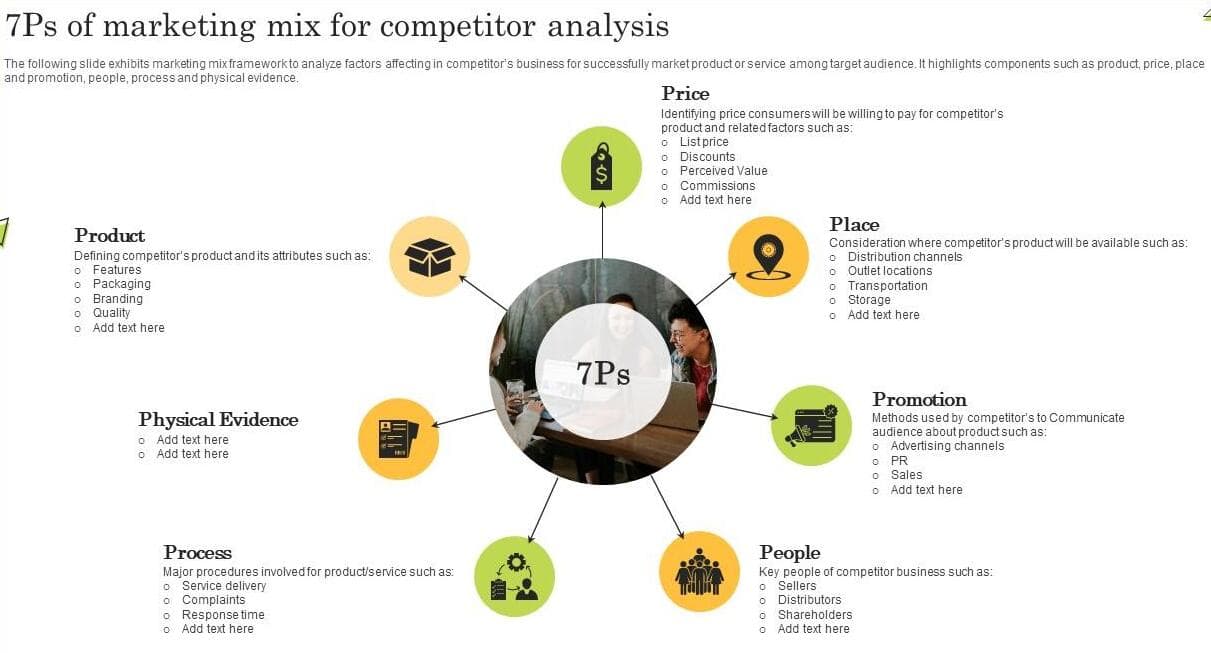
PEST analysis
No, not that kind of pest! A Political, Economic, Social, and Technological Analysis compares how the above factors influence your business versus your competitors.
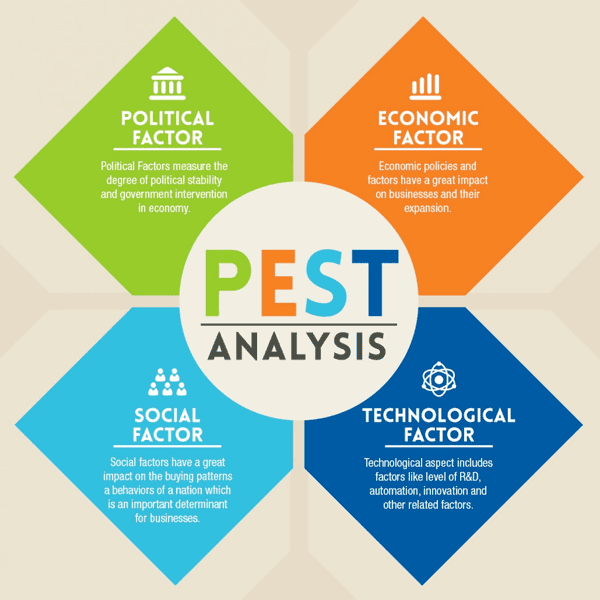
Growth-share matrix
This framework examines four key areas: pets, cash cows, question marks, and stars.
Pets don’t have a lot of market share and slowed growth but can be rebranded. Cash cows sell well already but don’t have the best market share, while stars have lots of growth and market share. Question marks don’t have a good market share but could grow.
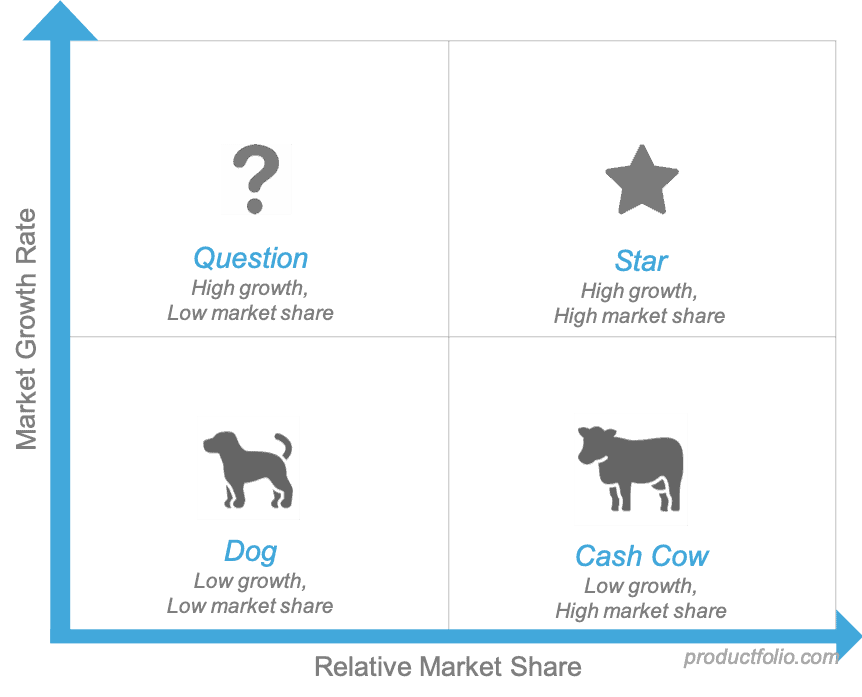
Porter’s five forces
This framework identifies five key forces against which to assess your competitors.
They are new entrants and how they’ll impact the market, substitute products and how they compare to yours, suppliers impact your pricing, buyers impact your pricing, and how many competitors you have.

SWOT analysis
I saved what is arguably the most popular competitor analysis framework for last, the classic SWOT analysis.
This stands for Strengths, Weaknesses, Opportunities, and Threats. You see whether you or your competitor have the upper hand in each of the four categories.
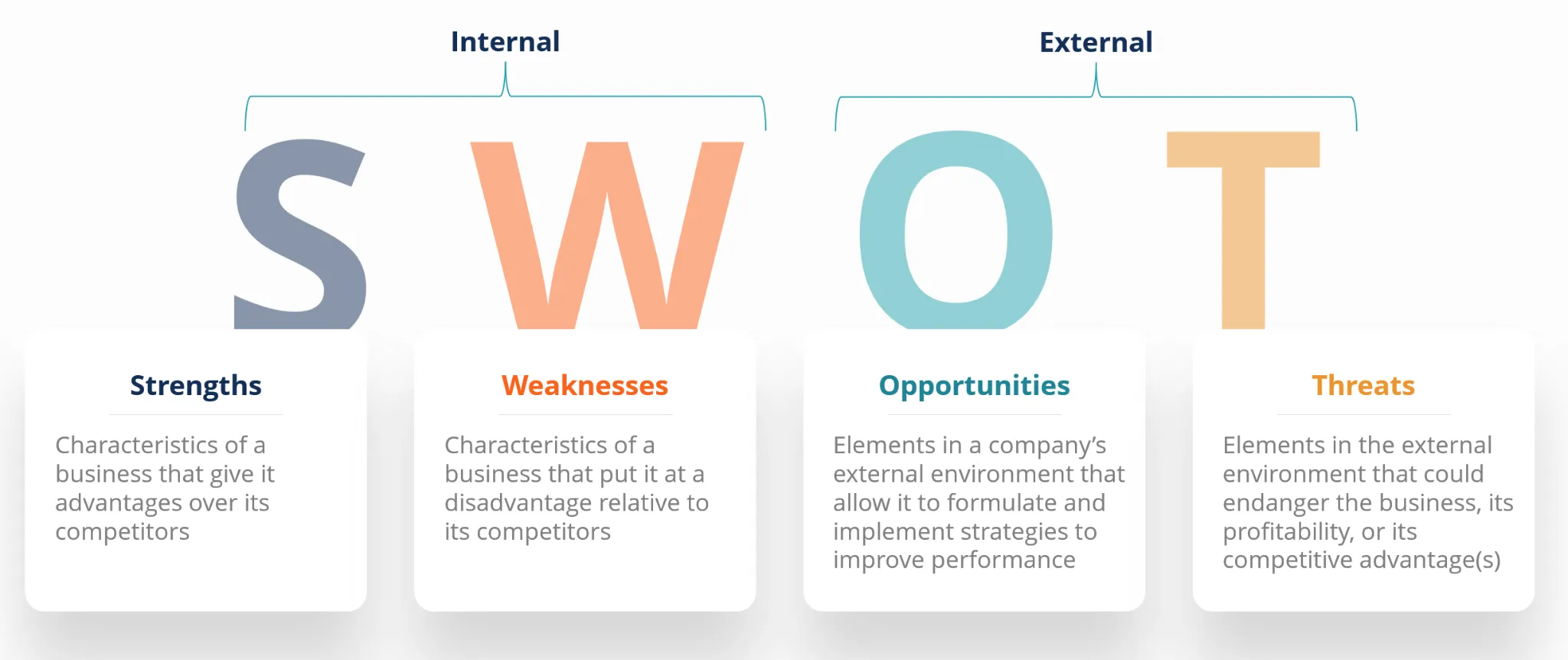
Product research
Ideally, you should gear up for product research before you start manufacturing products by the hundreds or thousands (or even hundreds of thousands).
By doing primary research and digging into the industry or niche you belong to, sample target market needs, what purpose your product would fulfill, and how unique it is to your competitors’ offerings, you can answer whether the world needs your products.
Because maybe it doesn’t! That’s a bitter pill to swallow, but it’s better to know it now before you shell out all that money than after, once you’re sitting on stock no one wants.
Industry trends
What’s happening in your industry?
Studying the emerging trends will keep you posted. I’ve discussed this in my other guides on industry trends, but just because something is trendy now doesn’t mean you need to implement it.
Instead, assess whether it would make sense for your business and would pay back long-term dividends. If you’re unsure, or if you’ve calculated that you won’t benefit, don’t jump. Some trends stick around, and others are gone faster than the current quarter.
Market size
Last but certainly not least, you must know your market size. How many people are there? How many of them have buying power and make the decisions? Of those people, how much they can afford to spend?
Gleaning the answers to these questions will help you ideate your products and direction.
Read more: Build a Better Business Using These Market Research Methods
What are the Key Trends in eCommerce Market Research for 2025?
That’s right, there are trends about trends! Since eCommerce market research requires so many components, any shortcuts or ways to simplify the process would make your life a lot easier.
That’s why I thought looking at how technology is changing eCommerce market research and the industry would be a great idea.
Technological advances in data analytics
Data analytics is one of the most important parts of eCommerce market research, a fact that’s applicable across industries.
However, let’s be real. Going through raw data until our eyes cross is no one’s idea of a good time. It has to be done, though, so you get it done.
Except, there’s another issue.
You see, we humans are prone to mistakes. There’s even a term for this when compared to using machinery to do the same task: human error. Whether you’re tired and miss something or get distracted and add the same number twice, human error can skew your results.
It would be a real shame if your total financial projections for your upcoming product were off by a whole decimal point because of human error, but it can happen.
That’s why it’s awesome that today, we can rely on technology to slog through all those raw numbers error-free. AI specifically can parse through huge quantities of data, using the power of machine learning to improve its processes as it goes.
When I say AI is shaping market research, it might sound a bit far-fetched, but it’s anything but. AI saves you time, reduces the risk of human error, and can provide deeper insights via predictive analytics, helping you connect better with your target market.
Read more: How AI Is Revolutionizing eCommerce Email Marketing
Zenith of mobile commerce

Another trend to bear in mind as you perform eCommerce market research is mobile commerce and its gaining prevalence.
This shouldn’t come as a surprise to many of you reading this.
After all, mobile phones are increasingly common, toted around in just about everyone’s pockets or purses. So then it also shouldn’t shock you to learn that the mcommerce or mobile commerce market in the United States will achieve $558.29 billion in sales in 2025.
As an eCommerce brand, you should already know a thing or two about mobile and desktop optimization, considering your strong online presence. However, there’s never a better time to give your eCommerce site the once-over and ensure it’s mobile-optimized.
In other words, your website should load in eight seconds or fewer. Oh, it should also have clear and easy-to-use navigation, feature a responsive design, use legible typography, use compressed images, and pass A/B testing.
Impact of social media on consumer behavior
It used to be that social media was a chance to catch up with friends or family members living far away.
In just about a decade, its usage has evolved in many ways. Today, social media is still about communicating with others near and far, but it’s also used for networking, entertainment, news, and product research.
More than passively learning about products, today’s consumers can connect with brands instantly, leaving comments or sending DMs to ask questions.
So many consumers’ preferences are proudly displayed on social media, from the pages they follow and like to the brands they comment on and otherwise engage with.
Not only that, but social media tools and analytics have gotten more sophisticated, too. Social media gives you some excellent insights into customer behavior and preferences.
Read more: 25 Top eCommerce Marketing Tools Sure to Boost Sales
Geographic Insights and Consumer Demographics
The world is a large and fascinating place. The eCommerce patterns and trends can vary depending on where you go, so here is an overview of the differences per region.
Europe
According to 2023 data from Eurostat, online goods and services are becoming prevalent across Europe.
Up to 70% of European citizens between the ages of 16 and 74 ordered online that year, and 75% of internet users bought online goods or services based in Europe, also in 2023.
However, the data makes it clear that an age gap exists between younger and older customers buying online. For example, Eurostat reports that age group shares are higher among those younger than those older, and the older folks had a lower-than-average rate of shares.
The younger groups were between 16 and 24, 25 and 34, and 35 and 44 years old. The older groups were those between 55 and 64 and 65 to 74.
The data also found that 87% of those between 25 and 34 years old who bought online products a year before the survey was conducted did so for personal needs. That number between 2021 and 2022 shot up and was not influenced by the COVID-19 pandemic as the data had been collected prior.
Eighty-five percent of those 35 to 44 bought personal goods online in 2023, and 76% of those 45 to 54.
North America
According to research by Statista, in 2024, the eCommerce items that got the largest share of purchases throughout North America were furniture, fashion, beverages, personal care and beauty, toys and hobbies, electronics, and eyewear.
Other categories, like OTC pharmaceuticals, food, DIY and hardware, household essentials, tobacco products, and furniture, also had a good chunk of sales.
Statista predicts that eCommerce furniture sales will decrease, which started in 2021 and will continue until 2024, then level out between 2024 and 2029.
Oppositely, eCommerce food sales are poised to increase through 2029.
Asia Pacific
According to data from Statista, the Asian Pacific or APAC market for eCommerce companies is most widely dominated by Thailand, which accounted for 21% of eCommerce sales in 2022 and is projected to achieve 25% in 2026.
Here’s a breakdown of the rest of the APAC countries’ actual and projected sales by most to least:
| Country | eCommerce Sale Shares in 2022 | Projected eCommerce Sale Shares by 2026 |
| South Korea | 17% | 20% |
| Taiwan | 15% | 19% |
| Hong Kong | 11% | 13% |
| China | 10% | 10% |
| New Zealand | 10% | 11% |
| Singapore | 10% | 12% |
| Vietnam | 10% | 12% |
| Japan | 9% | 10% |
| Australia | 6% | 8% |
| Indonesia | 6% | 9% |
| Malaysia | 6% | 8% |
| India | 4% | 6% |
| Philippines | 4% | 6% |
Market Segmentation in eCommerce
As eCommerce networks grow globally, the need to finely segment audiences becomes more apparent.
Without identifying your audience’s challenges, pain points, and interests through eCommerce market research, you can’t present personalized product recommendations that resonate with them.
That results in a higher bounce rate and reduced sales.
Bearing that in mind, here are some segmentation criteria to consider for your audience.
Geographic location
Although an eCommerce business doesn’t need to concern itself as much with geographics to the extent of an exclusive brick-and-mortar business, you also shouldn’t ignore your customers’ locations.
After all, geographics play a role in the types of products a customer is interested in.
Let’s use a basic example to illustrate my point. If one group of customers lives in a very rainy region, they’ll need more umbrellas than those in a predominantly dry region.
Product type
Knowing the types of products your ideal customer already owns is another useful segmentation criterion.
For instance, if yours is a tech eCommerce company and one of your customers just bought the latest smartphone, they won’t need a new phone again.
But do you know what they will need?
Phone cases, chargers, cables, and accessories. You can help them maximize the usage of their new product and increase your business sales by dividing your audience by their purchase history.
Amount last purchased
Another area of purchase history to examine is how much the customer has spent recently.
However, you need a bit of historical context to take advantage of this metric.
Let’s say a customer spent $1,000 the second-to-last time they purchased from you, but their last purchase was only $250. Do you promote something more expensive or moderately priced to them?
This is where the historical data comes in handy. You can look back further to determine if the more expensive purchase happened more regularly or was only a blip in the data.
Read more: 19 eCommerce Best Practices to Win Customer Confidence
Competitive Analysis in eCommerce
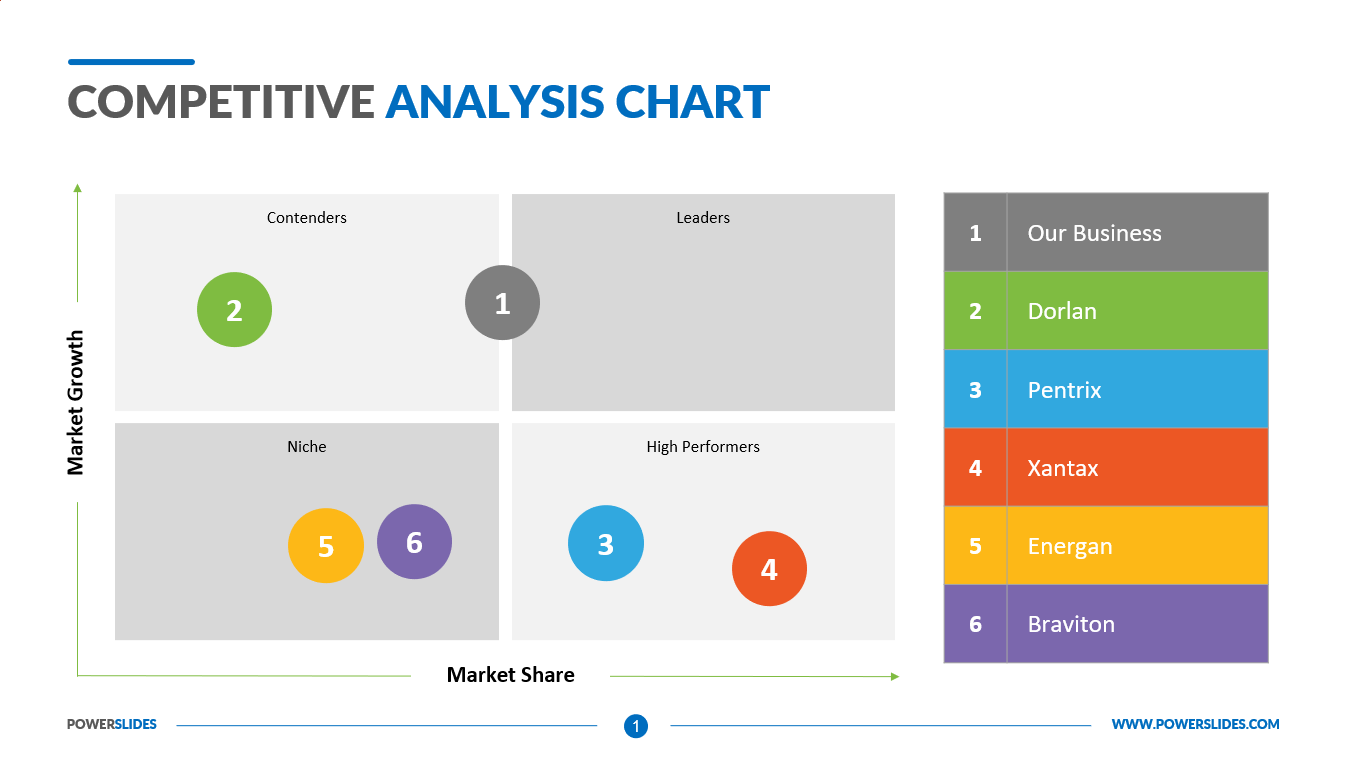
Have you performed a competitive analysis yet? The data you obtain from the research will help you better understand your position in the eCommerce marketplace and discover chances to separate yourself from the competition, as I discussed earlier.
Now that you realize their value, let’s discuss how a competitive analysis is done.
Step 1
The first step is always finding who your competitors are.
Primarily, there are your direct competitors or those manufacturing the same category of products as you. You share a target market and potentially even a geographic location with them.
Below them are your indirect competitors. They’re still in your industry, but don’t go after the same market segment as you do. They might also be based in a different area.
Then, there are the substitutes. They don’t specialize in your industry or niche but do happen to do business in your area and go after the same target market.
Step 2
Next, it’s time to learn as much about your competitors as possible. You can do a SWOT analysis, identifying your strengths, weaknesses, opportunities, and threats, or review the four P’s (promotion, place, pricing, and product).
The goal is to learn as much about your competitors as you can, including what kinds of products they make, who their suppliers and distributors are, what their marketing strategy is (including content marketing, social media marketing, email marketing, and advertising), what their sales strategies are, how well they rank, and how known their brand is.
Step 3
Now that you’ve learned about your competitors, it’s time to assess their strongest and weakest areas.
Customer reviews will come in handy here, as they are unfiltered glimpses into what areas your target market finds the most valuable and which could use improvement.
Beyond that, if you can compare competitor performance data and user testing metrics, you’ll be in an even better position to identify where your competitors are strongest and weakest definitively.
Step 4
Armed with all that handy eCommerce market research, you’re now ready to spot where your products fit into the market and how they offer an advantage compared to your competitors. Perhaps you offer faster shipping, get more engagement on social media, or have better prices.
Whatever your competitive advantage is, position that in the forefront, as this is your ticket to differentiating yourself in a crowded market.
Step 5
Don’t get lax! You have competitor data and must stay abreast of what they’re up to. This will become harder as your business goes further, as you’ll have more on your plate, but remember to check in with your competitors at least quarterly.
Their decisions might influence yours, whether you innovate a solution that usurps them or avoid their latest misstep.
Read also: 5 eCommerce Email Marketing Software to Help You Sell More
Challenges and Solutions in eCommerce
eCommerce is a market riddled with challenges. While you can strive to avoid as many as possible, the best solution is to have plans to deal with them.
Here are some issues to be aware of and actionable solutions.
Low internet penetration in certain areas
The internet is global, and while I’m not denying that, the internet penetration rate varies in different regions. Internet penetration refers to the rate of Internet access, so a higher penetration rate means that the region has ready access to the Internet. In comparison, a lower rate means less access.
North Korea has among the lowest internet penetration rates, while Burundi and the Central African Republic also have a low rate, according to Statista.
While there’s nothing you can do about providing internet access to others, you can learn your market and consider veering away towards those markets where your promotional efforts would be wasted.
Data privacy concerns
Today, consumers are more concerned about their data privacy than ever. Data breaches and leaks crop up more regularly all the time. How do you ease your customers’ minds that their data is in good hands?
Begin using encryption and authentication, alerting your audience that you’re doing so. Limit how much data internal and external parties have access to. Stay abreast of security risks and beef up your online security regularly.
Customer loyalty
It’s a bit harder to build a loyal following without a brick-and-mortar presence, but by no means impossible. The key is staying visible. Post on your blog regularly. Set up an email frequency your audience appreciates, such as weekly or three times a week. Stay active on social media daily if you can.
Reward your customers for their loyalty as well. Offer them discounts, freebies, or VIP access. Provide early product sneak peeks and exclusive sales codes.
Competition
New competitors will always crop up, leaving holes if any of your old competitors duck out. That’s why you must prioritize competitor research to learn who your new competitors are, what they’re good at, and where they’re weaker than you.
You’ll recall that I recommend studying your current competitors long-term, as their techniques and priorities will naturally change given time.
Read also: eCommerce Email Marketing Simplified — 15 Examples + Tips
Conclusion
The insights gained from conducting eCommerce market research will inform you of what your target market wants and what your competitors are doing to meet those demands. You can find a place for your eCommerce products in the marketplace and position yourself as a rising force in your niche.
EngageBay is an all-in-one marketing, sales, and customer support software for small businesses, startups, and solopreneurs. You get email marketing, marketing automation, landing page and email templates, segmentation and personalization, sales pipelines, live chat, and more.
Sign up for free with EngageBay or book a demo with our experts.
Frequently Asked Questions (FAQ)
1. What is the importance of eCommerce market research?
eCommerce market research is a valuable tool for learning more about your target market, competitors, and strengths and weaknesses to dominate the competition and gain an advantage.
2. How has mobile commerce impacted eCommerce market research?
As more consumers use their mobile devices to browse and purchase products and services, mobile commerce, or mCommerce, has become a rising star in eCommerce. Understanding mobile trends will better equip your eCommerce business to serve your audience.
3. What role does social media play in eCommerce market research?
Social media is a pivotal tool for understanding your target market’s behaviors, interests, and needs. You can also use it to compare your competitors’ reach against yours.
4. How can businesses overcome challenges in eCommerce market research?
Roadblocks in eCommerce market research are common. A reliable process for collecting and tabulating data and finding tools that augment the process will help you surmount any challenge successfully.
